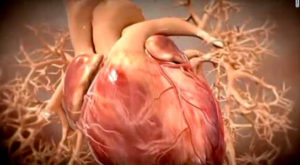 For diabetic patients like 46-year-old Mac from Boca Raton, FL, a second heart attack may no longer be a concern.
For diabetic patients like 46-year-old Mac from Boca Raton, FL, a second heart attack may no longer be a concern.
Though it’s a medical treatment that’s been in use and approved by the FDA for over fifty years, Chelation Therapy has recently been proven to potentially be an effective tool for diabetics.
The TACT study, or Trial to Asses Chelation Therapy, tested a total of 1,709 patients to see how chelation would affect participants age fifty and older with a myocardial infarction, or past heart attack. The results showed improvements in two of the subgroups of patients who were in the trial. These patients included anyone with diabetes, as well as anyone who was not diabetic, but who had suffered their first heart attack on the anterior part of the left ventricle ( “anterior MI” ). Patients in this study were given both chelation plus all their usual medications that doctors give to anyone in this category.
So what is chelation therapy? Originally used as a treatment to rid the body of heavy metals and metabolic waste, this IV therapy technique uses substances like EDTA (ethylenediaminetetraacetic acid) which can have a positive effect on multiple ailments including heart disease, gangrene, leg cramps and even memory loss.
The therapy is administered by a series of twenty to thirty intravenous infusions, each lasting about 3-3.5 hours. This can be done at a clinic or doctor’s office and patients can go home after each session.
“I have diabetes and high blood pressure and already had my first heart attack at forty-five years old,” said Mac. “After receiving two stents my doctor told me I needed to make some big changes—so I changed my diet, I started exercising and taking all the medications that he prescribed faithfully.”
But according to his doctor, Mac was still a high-risk heart attack candidate. It wasn’t until he began chelation therapy that his chest pain began to resolve and his doctor determined his chances of another attack were dissipating.
The results of the TACT trial found it’s subjects with diabetes in much better shape after the chelation, where treatment reduced their calcium levels and the plaque build up in their coronary arteries, decreasing their risk of future cardiac events.
“I’m grateful that I can do something now to fight this,” said Mac. “I’ve at least got a fighting chance now.”